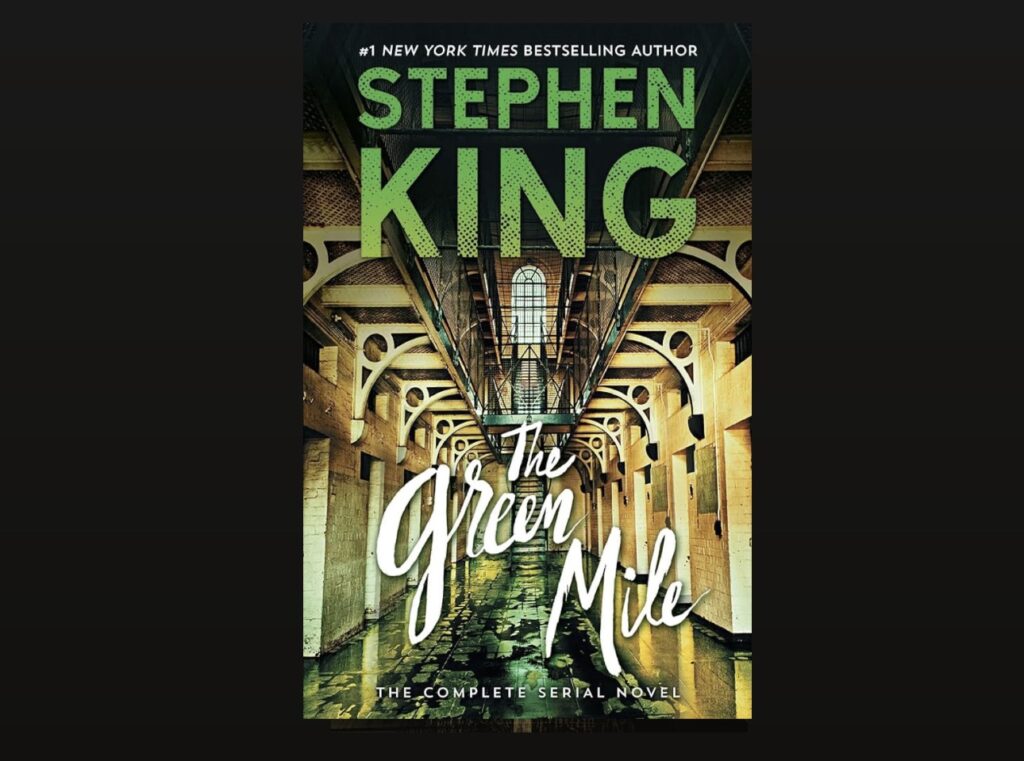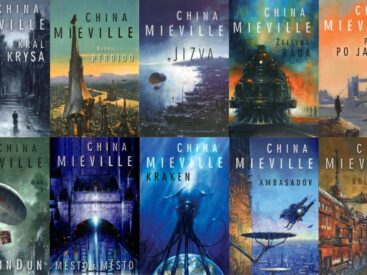For those deeply immersed in the world of books, the name Stephen King is a familiar beacon. Even those not particularly fond of the horror genre can scarcely overlook this celebrated author’s influence. His works transcend the traditional boundaries of literature, often finding their way into the cinematic world. Films like “It”, “The Shawshank Redemption”, and “Carrie” are just a few examples of his novels adapted into major movies.
Before diving into the exhaustive catalog of Stephen King’s literary works, it is essential to understand the man behind these masterpieces. Born on September 21, 1947, Stephen King’s journey began as an English teacher. His connection with his home state, Maine, is evident in many of his stories like ‘Salem’s Lot, Pet Sematary, and Carrie, where he intricately weaves the familiar locales into his narratives.
King’s writing career launched with “The Glass Floor”, a short story sold in 1967. He later married fellow writer Tabitha Spruce in 1971. King’s prolific career encompasses 63 novels, approximately 120 short stories, 20 novellas, and 5 non-fiction books. He even published seven books under the pseudonym Richard Bachman.
The Chronological Catalogue of Stephen King’s Published Works
Stephen King’s first published novel was “Carrie” (1974), marking his entry into the literary world. This story of a teenage girl with supernatural powers seeking revenge against her tormentors set the tone for King’s future works. From this point, his writing journey is a long and varied one, spanning several genres and themes.
Notable Works by Stephen King
| Carrie (1974) | A tale of a teenage girl using her telekinetic powers for revenge. |
| ‘Salem’s Lot (1975) | A writer faces a vampire outbreak in his hometown. |
| The Shining (1977) | A family confronts evil forces in an isolated hotel. |
| The Stand (1978) | Post-apocalyptic battle between good and evil after a plague. |
| The Long Walk (1979) | A dystopian America where a deadly walking competition takes place. |
| The Dead Zone (1979) | A man awakens from a coma with psychic abilities. |
| Cujo (1981) | A story centered around a terrifying, rabid dog. |
| The Running Man (1982) | A dystopian tale of a deadly game show. |
| The Dark Tower Series (1982 – 2012) | An epic series interlinking various King’s novels. |
| Pet Sematary (1983) | Exploring the consequences of resurrecting the dead. |
| It (1986) | A monstrous entity terrorizes children in a small town. |
| Misery (1987) | A writer’s encounter with an obsessed fan. |
| The Green Mile (1996) | A prison guard discovers an inmate’s extraordinary powers. |
Descriptions of Stephen King’s Most Popular Books
1. Carrie (1974)
Stephen King’s “Carrie” delves into the life of a high school girl who, after a lifetime of being ostracized and abused by her classmates and religiously fanatic mother, discovers she possesses telekinetic powers. The novel intricately portrays Carrie’s psychological turmoil, her struggle with her own identity, and her eventual catastrophic use of her powers. King masterfully uses this supernatural element to explore themes of adolescence, bullying, and the destructive nature of revenge. The climax, featuring a prom night gone horribly wrong, is a haunting depiction of the consequences of unchecked rage and oppression.
2. ‘Salem’s Lot (1975)
In “‘Salem’s Lot,” King brings to life a small New England town that becomes the breeding ground for vampires. The protagonist, a writer named Ben Mears, returns to his childhood town to find it transformed by a sinister presence. The narrative weaves together the lives of various townsfolk as they gradually succumb to or combat the vampiric infestation. This novel is not just a horror story but also a commentary on the disintegration of small-town America and the often unseen evils that lurk within familiar places.
3. The Shining (1977)
“The Shining” is set in the remote Overlook Hotel where Jack Torrance, his wife, and their son, Danny, are isolated during the off-season. The hotel’s haunted past and Jack’s own demons lead to a descent into madness. Danny’s psychic abilities, referred to as “the shining,” unearth the hotel’s darkest secrets, building a tension that climaxes in a fight for survival. This novel explores the themes of addiction, domestic violence, and the haunting nature of the past. It stands as a profound study of the human psyche under duress.

4. The Stand (1978)
“The Stand” is not just a story of a post-apocalyptic struggle; it’s a profound exploration of human nature and society’s fabric when faced with catastrophic events. King delves into how individuals and communities rebuild and redefine themselves in the wake of collapse. The characters, each with their own deeply personal stories and moral compasses, represent the diverse responses to crisis and leadership. Mother Abagail symbolizes hope and goodness, rallying survivors in a fight for a better world, while Randall Flagg embodies chaos and tyranny, attracting those drawn to power and domination. King’s narrative intricately explores how crises can bring out both the best and worst in humanity. The novel’s vivid portrayal of a society teetering on the brink of moral and ethical ambiguity makes it a compelling reflection on the human condition. King’s ability to intertwine the personal journeys of his characters with broader social and existential questions makes “The Stand” a standout work, offering insights into resilience, redemption, and the enduring battle between light and darkness in the human soul.
5. The Long Walk (1979)
Set in a dystopian future America, “The Long Walk” is a chilling tale of a macabre competition where one hundred teenage boys must maintain a constant walking pace under strict rules. The contest, a government-sponsored event, is a brutal commentary on society’s fascination with spectacle and the dehumanization of individuals. As the walk progresses, the psychological and physical toll on the participants becomes increasingly severe, revealing the dark undercurrents of a totalitarian regime. This novel is a poignant exploration of endurance, friendship, and the human cost of entertainment.
6. The Dead Zone (1979)
“In The Dead Zone,” King masterfully weaves the supernatural into the political and personal realms of John Smith’s life. Smith’s psychic abilities thrust him into a world where his insights can alter the course of history. As he grapples with the ethical implications of his powers, the novel delves into the complexity of making choices with far-reaching consequences. The story raises poignant questions about responsibility when one possesses such foreknowledge. King’s integration of a political subplot, involving a rising demagogue whom Smith perceives as a threat, adds a layer of urgency and relevance. This element transforms the book into a multifaceted narrative that examines the intersections of personal destiny, political power, and the choices that shape our world. The nuanced portrayal of Smith’s journey, from a man seeking normalcy to a reluctant hero compelled by circumstance, highlights King’s ability to create characters whose internal conflicts mirror the external chaos they face. “The Dead Zone” stands out as a thought-provoking exploration of the human condition under extraordinary circumstances.
7. Cujo (1981)
“Cujo” is a harrowing tale of a gentle Saint Bernard transformed into a rabid monster. The story focuses on the Trenton family, whose mundane life is upended by a series of unfortunate events leading to a terrifying encounter with Cujo. King uses the narrative to delve into the breakdown of a small community, the fragility of domestic life, and the primal fear of being hunted by a relentless predator. It’s a poignant exploration of love, fear, and survival.
8. The Running Man (1982)
In “The Running Man,” the dystopian future is a stark reflection of societal decay, where a ruthless game show becomes a metaphor for the struggles of the lower class. The protagonist, driven by desperation, embodies the plight of the oppressed in a society where wealth and entertainment grotesquely intertwine. King’s narrative delves into the psychology of survival, not just physically but also morally, as the protagonist must navigate a world where human life is trivialized for entertainment. This novel is a profound commentary on the extremes of capitalist exploitation and the voyeuristic nature of media. King skillfully uses this grim backdrop to highlight the resilience of the human spirit, showcasing how even in the darkest times, the desire for dignity and justice can drive individuals to extraordinary acts of courage and defiance. The book serves as a powerful reminder of the consequences of a society that values spectacle over humanity, making it a deeply relevant and thought-provoking read.
9. The Dark Tower Series (1982 – 2012)
This series is a monumental blend of fantasy, science fiction, horror, and Western motifs. It follows Roland Deschain, the last Gunslinger, on his quest to reach the Dark Tower, a mythical structure that holds the key to the fate of the universe. Across the series, King masterfully weaves a complex narrative that interlinks many of his other novels, creating a rich and expansive mythology. This journey through multiple realities explores themes of destiny, sacrifice, and the interconnectedness of various worlds.
10. Pet Sematary (1983)
“Pet Sematary” delves into the profound impact of grief and the desperate measures one might take to alleviate it. King expertly portrays the Creed family’s descent into despair following a devastating loss, capturing the all-consuming nature of grief that blurs the lines between right and wrong. The novel is a chilling meditation on the perils of tampering with the natural course of life and death, underscoring the idea that some boundaries, once crossed, can lead to unimaginable horrors. Through vivid imagery and intense emotional depth, King explores the concept of death not just as an end but as a transformative force that can alter the living in profound ways. The haunting atmosphere of the novel, coupled with the ethical dilemmas faced by the characters, makes “Pet Sematary” a powerful narrative about love, loss, and the unintended consequences of trying to reverse fate. King’s exploration of these themes strikes at the core of human fear and fascination with the unknown, making this novel a compelling and deeply unsettling journey into the heart of darkness.
11. It (1986)
“It” is a masterful blend of horror and psychological drama. The novel alternates between two timelines, following a group of children in the 1950s and their reunion as adults in the 1980s, as they confront a shape-shifting entity that preys on the children of Derry, Maine. King uses the town and its history as a backdrop to explore themes of trauma, memory, and the loss of innocence. The entity, often appearing as Pennywise the Clown, becomes a symbol of the fears and horrors that haunt both the individual psyche and society at large.
12. Misery (1987)
“In ‘Misery,’ King delves deep into the twisted psyche of Annie Wilkes, whose obsession with Sheldon’s character, Misery Chastain, drives the novel’s tension to harrowing heights. This story goes beyond the surface-level horrors of captivity, exploring the complex and often dark relationship between creators and their audience. King’s portrayal of Sheldon’s struggle for survival under the capricious mercy of Wilkes paints a vivid picture of the nightmare that ensues when fandom turns fatal. The novel also serves as a metaphor for the creative process itself, highlighting the pressures and fears faced by artists in meeting the expectations of their audience. King’s intricate exploration of Sheldon’s mental and physical ordeal, coupled with Wilkes’ unpredictable and volatile nature, makes ‘Misery’ a compelling study of power dynamics, psychological manipulation, and the perilous journey of an artist trapped in the clutches of a fan’s vision. This narrative, rich in suspense and psychological depth, is a chilling reminder of the fragility of freedom and the destructive potential of obsession.”
13. The Green Mile (1996)
Set on death row in a Southern prison during the Great Depression, “The Green Mile” tells the story of John Coffey, a gentle giant with supernatural healing abilities. The novel, narrated by the prison guard Paul Edgecombe, explores the complex relationships between guards and inmates, the cruelty of the justice system, and the miracles of the unexplained. This narrative weaves a tapestry of moral questions, exploring themes of redemption, compassion, and the human capacity for both kindness and brutality.

Insights into Stephen King’s Literary Achievements
Longest Book
“The Stand” is King’s longest novel with 1152 pages. This monumental work is more than just a lengthy read; it’s a testament to King’s ability to construct elaborate worlds and intricate narratives. The novel’s sprawling storyline, which encompasses a battle between good and evil in a post-apocalyptic world, showcases King’s talent for weaving complex, character-driven plots that engage readers over an extended narrative arc.
Total Number of Books
Over 60 novels, 200+ short stories, and 5 non-fiction works. This impressive volume of work underscores King’s prolific nature as a writer. Throughout his career, King has demonstrated remarkable versatility, moving seamlessly between different genres and forms. His short stories, often anthologized and celebrated, reveal his skill in creating suspense and terror in a condensed format. His non-fiction works, though fewer, offer insights into his thoughts on writing and the horror genre, providing a valuable resource for both fans and aspiring writers.
Favorite Book
King’s personal favorite is “Lisey’s Story”. This choice is particularly revealing as it diverges somewhat from his more famous horror-centric novels. “Lisey’s Story” is a blend of romance, horror, and psychological thriller, delving deep into the complexities of love, grief, and creativity. The novel’s focus on the widow of a famous author and her journey through her late husband’s unpublished manuscripts offers a poignant exploration of the private worlds that writers inhabit. This preference highlights King’s personal connection to his characters and their stories, and perhaps reflects on his contemplations of his legacy and the afterlife of a writer’s work.
Stephen King’s body of work not only spans a significant number of pages and titles but also covers a vast landscape of human emotions and experiences. His preference for “Lisey’s Story” and his monumental achievement with “The Stand” are just examples of his versatility and depth as a writer. His ability to engage readers across various forms and themes further cements his position as a master storyteller, one whose works will continue to be read and appreciated for generations.
Conclusion
Stephen King’s expansive repertoire, which spans a multitude of genres and styles, truly offers something for every reader. His unique talent for blending the macabre with the mundane allows him to delve deep into the human psyche, often exposing the underlying fears and anxieties that plague modern society. From the depths of horror to the subtleties of psychological drama, his narratives often navigate the complex interplay between the supernatural and the everyday, making the extraordinary seem almost plausible.
King’s stories often feature richly developed characters, each grappling with their personal demons, societal pressures, or existential crises. Whether it’s the innocence of youth confronting unimaginable evil in “It” or the psychological breakdown of a writer in “Misery,” King demonstrates a profound understanding of human nature. His characters are relatable yet deeply flawed, making their journeys both compelling and heart-wrenchingly realistic.
Furthermore, King’s mastery of gothic elements and dark fantasy creates atmospheres that are not just terrifying but also intensely immersive. Settings like the desolate, haunted landscapes of ‘Salem’s Lot or the claustrophobic confines of the Overlook Hotel in “The Shining” become characters in their own right, shaping the narratives and influencing the fates of the protagonists.
King’s exploration of themes such as morality, destiny, and the human condition resonates with readers from all walks of life. His works often challenge societal norms and push the boundaries of conventional storytelling. In doing so, he invites his audience to ponder deeper philosophical questions, while still providing the thrills and chills that are the hallmarks of his genre.
In essence, Stephen King’s literature is not just about telling ghost stories or spinning tales of terror; it’s about exploring the human experience, with all its complexities, through the lens of the extraordinary. His ability to intertwine the real with the unreal, the rational with the fantastical, continues to captivate readers worldwide, cementing his legacy as one of the greatest storytellers of our time.



